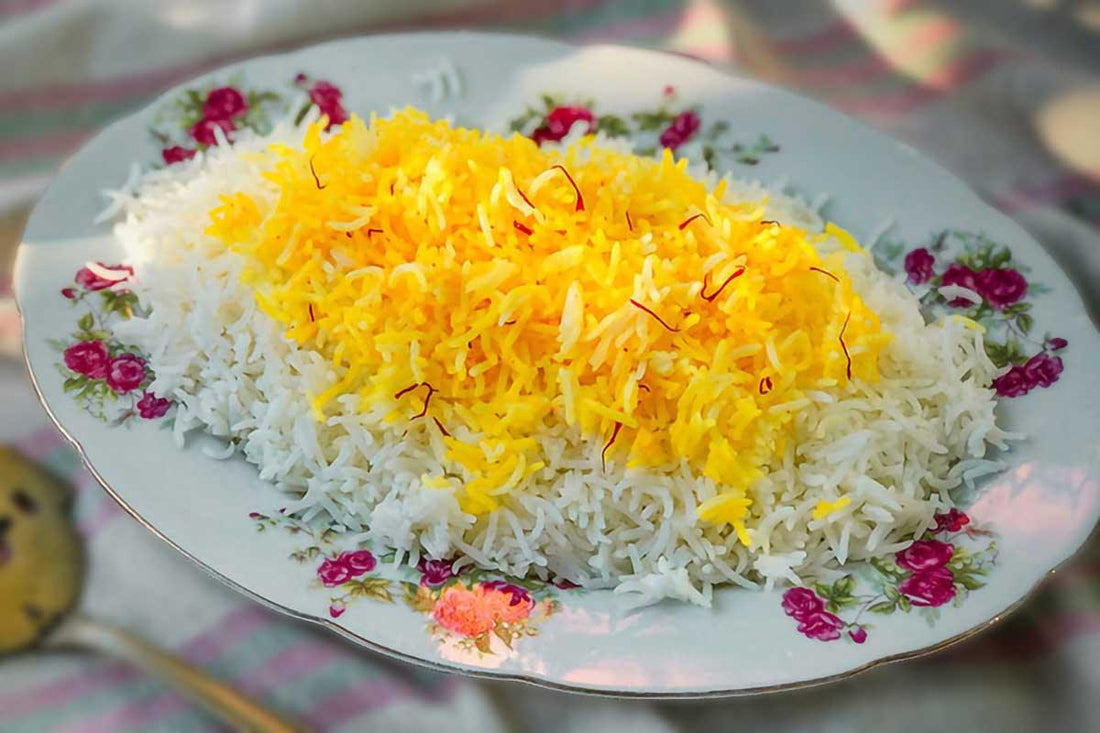Types of rice in the world, nutritional value of rice, minerals and vitamins in it, and is rice fattening?
Rice is one of the oldest cereal grains in the and food staples in the world. Half of the world's population relies on rice as a primary food source. After sugarcane and corn, rice is the third most produced agricultural crop globally.
There are over 120,000 varieties of rice in the world. The European Union and customs organizations of member countries classify and differentiate between 5,000 to 18,000 types of rice for evaluation and import duties.
Currently, the various rice varieties worldwide are categorized into two main biological species: There are only two species of cultivated rice in the world: Oryza glaberrima, or African rice, and Oryza sativa, or Asian rice.
Types of Rice
There are thousands of types of rice, but depending on how producers process them, they fit into two groups: white or brown (whole grain). White rice is the most common type, though brown rice offers more health benefits.
- White Rice
- Brown Rice
- Basmati Rice: A staple in Indian and Pakistani cuisine.
- Jasmine Rice: A type of Thai rice.
- Japanese Rice (Sushi Rice)
- Bomba Rice: Spanish rice.
- Arborio Rice: Italian rice.
- Chinese Black Rice
- Wild Rice
- Kalijira Rice

Potential Detriments of Rice Consumption
Consuming a small daily amount of rice is not harmful and can even help maintain heart health. However, excessive consumption can lead to obesity and an increased risk of type 2 diabetes.
Rice contains an antioxidant called phytic acid or phytate, which may inhibit the absorption of essential minerals like iron and zinc in the body.
Additionally, rice contains a certain amount of arsenic, and consuming large quantities of rice can introduce this toxic element into the body, potentially leading to diseases such as cancer.
Rice is a rich source of carbohydrates, primarily in the form of starch. Unfortunately, during the processing of white rice, the bran or outer layer of the grain, which contains insoluble fiber, is removed, leaving only soluble fiber (resistant starch) within the rice. Resistant starch increases butyrate production in the gut, which is associated with reduced inflammation, improved gut function, and a lower risk of colorectal cancer.
Nutritional Value of Rice Components
- Carbohydrates
Simple and complex carbohydrates are essential parts of an individual's diet, providing the primary source of energy for the body. Simple carbohydrates include sugars such as glucose, fructose, lactose, and sucrose. Complex carbohydrates consist of starches, glycogen, and fibers, which are long chains of simple carbohydrates like glucose. In plants, carbohydrates are stored as starch, while in humans, they are stored as glycogen.
Rice is classified as a complex carbohydrate and compared to simple carbohydrate foods, contains more vitamins, minerals, and fiber. Rice is high in carbohydrates, with 25.5-32.3 grams of carbohydrates per 100 grams of cooked rice. In fact, 90% of the calories in rice come from its carbohydrates, and it is categorized under the "Bread and Grains" group in the food pyramid.
- Dietary Fiber
Research has shown that consuming at least 25 grams of fiber per day reduces the risk of chronic diseases. Fiber-rich foods help improve bowel function and decrease the likelihood of intestinal diseases. A one-half-cup of white rice contains 3 grams of dietary fiber, while the same amount of brown rice contains 8.1 grams of dietary fiber.
- Protein
Dietary proteins provide the essential amino acids needed for building and maintaining tissues, enzymes, and some hormones in the body. Many regulators of bodily processes are proteins, and they can also serve as a source of energy.
Although rice is not considered a rich source of protein (containing 2-5.2 grams of protein per cup of cooked rice), its protein quality is higher than that of other grains. The biological value (BV) of protein is a measure of protein quality and indicates how much of the nitrogen in the ingested protein is retained by the body. The biological value of rice protein is 86. Proteins with a BV above 70 are considered to be of acceptable quality.
- Fat
Rice contains a very small amount of fat (2 grams of fat in 1/2 cup of cooked white rice). The human body is capable of synthesizing all necessary fatty acids except for linoleic acid. Linoleic acid constitutes approximately 30% of the total fatty acids in rice. Rice is cholesterol-free (cholesterol being specific to animal fats) and due to its very low-fat content, it is considered an excellent food in all dietary regimes.

Rice Vitamins
Folic Acid (Vitamin B9)
Folic acid, also known as folate or Vitamin B9, is a member of the B vitamin family and an essential cofactor for enzymes involved in DNA and RNA synthesis, and its consumption is particularly recommended during pregnancy to prevent neural tube defects in the fetus. It also plays a role in the maturation of red blood cells.
The recommended daily intake of folic acid for adults is approximately 400 micrograms. Folic acid is found in raw nuts, leafy green vegetables, and enriched grains like rice. Half a cup of enriched white rice contains about 8% of the total daily requirement of folic acid needed by the body.
Thiamine (Vitamin B1)
Thiamine, also known as vitamin B1, plays a special role as a coenzyme in the conversion of glucose into energy. It supports the health of the brain, heart, and proper appetite. Since the body cannot store thiamine, its presence in the daily diet is essential.
Half a cup of cooked white and brown rice contains approximately 6% and 7% respectively of the total daily requirement of thiamine needed by the body.
Riboflavin (Vitamin B2)
Rice contains a small amount of riboflavin (vitamin B2), which is essential for energy production and maintaining skin and eye health. Half a cup of cooked brown rice provides approximately 1% of the total daily requirement of riboflavin needed by the body.
Niacin (Vitamin B3)
Niacin, also known as vitamin B3, is necessary for converting glucose into energy. It is also important for skin health and proper functioning of the digestive system and nervous system. Half a cup of cooked brown and white rice provides approximately 8% and 6% respectively of the total daily requirement of niacin needed by the body.
Vitamin E
Vitamin E is a fat-soluble vitamin that protects essential fatty acids and vitamin A from oxidation in cells and body tissues. Half a cup of rice contains a negligible amount of vitamin E.

Minerals in Rice
Calcium
Rice is very low in calcium. Calcium is essential for building teeth and bones, as well as for muscle function. Calcium ions are involved in nerve impulse transmission and play a role in one of the stages of blood clotting.
Iron
The majority of iron in the body is found in hemoglobin, which is responsible for oxygen transport to tissues. This makes iron crucial for various oxidation reactions within cells. Additionally, iron is a component of many enzymes involved in converting glucose and fatty acids into energy. Half a cup of cooked white and brown rice provides approximately 7% and 8% respectively of the total daily requirement of iron needed by the body.
Phosphorus
Phosphorus plays a special role in body metabolism and in the formation of bones and teeth. Half a cup of cooked brown and white rice provides approximately 8% and 3% respectively of the total daily requirement of phosphorus.
Potassium
Potassium is essential for protein synthesis, enzyme function in cells, and maintaining fluid balance in the body. Half a cup of cooked brown and white rice provides approximately 1% and a very small amount of the daily requirement of potassium.
Sodium
Sodium helps maintain fluid balance in the body and supports the normal function of nerves and muscles. Grains naturally have low sodium content, and white rice, in particular, contains no sodium. The sodium content in cooked rice depends on the sodium (salt) content in the cooking water and any added salt, making it a good choice for low-sodium diets.
These minerals contribute to the nutritional profile of rice, supporting various physiological functions and overall health.
Factors Affecting the Nutritional Value of Rice
Iranian rice is known for its delicious and fragrant aroma. But unlike foreign rice, for example, Indian rice is not as tall as them, but it has a very good taste and aroma that cannot be compared with foreign rice. The nutritional value of Iranian rice is much higher than foreign rice. But foreign rice is mostly prepared in a mold. Mold means that the second and third grade rice is crushed and ground into flour and put back into regular, one-size-fits-all molds. This is because foreign rice looks more beautiful than it looks. It is sometimes seen that rice fields abroad are irrigated with sewage water, which causes rice to contain chemicals such as arsenic and cyanide, which are very harmful to health. The nutritional compounds of rice and its nutritional value have made rice play an important role in children's nutrition.
Detecting Real Rice from Fake Rice
1- Higher Price of Fake Rice: Fake rice in the market generally has a higher price compared to ordinary rice, primarily due to the addition of essence. This essence is generally very harmful to the human body. According to research, consuming fake rice is akin to eating a plastic bag that is very difficult for the body to digest. Continuous consumption of fake rice can lead to serious health issues for individuals, including gastrointestinal diseases and ultimately cancer.
Another type of rice that may pose hazards to the body is genetically modified rice, which will be further defined, and its detection methods explained below.
2- Place some rice in a container filled with water. The grains that sink to the bottom are real rice. Crush some of the rice using a mortar and pestle. The grains that completely crush are natural or real rice, while those that remain uncrushed and have a yellowish core are fake or plastic rice.
3- Heat a small amount of rice. If you've purchased rice and are unsure whether it's plastic or not, try this method. Heat a small amount of rice over a flame. If you observe it quickly burning and emitting a plastic-like smell, it indicates that the rice is plastic and very harmful to health.
4- test if mold grows. If you put rice in a closed container under sunlight and it doesn't change (remains intact), it might be plastic rice. But if mold grows, it confirms that the rice is natural. Another method is to soak the rice in water; if mold develops within 4 to 5 days, it's likely natural rice; if not, it could be fake.
The Difference in Nutritional Value Between steamed and Strained Rice
There's a difference in nutritional value between steamed and strained rice. While some people prefer the taste of strained rice and might not be worried about weight gain, it's important to note that steaming preserves more nutrients. This is because boiling and then straining rice can lead to the loss of water-soluble vitamins, like those in the B complex. So, if you're looking to maximize the nutritional benefits of rice, steaming is the better option.

Does Strained Rice Make You Gain Weight?
Some people believe that rinsing rice removes starch, making it a slimming option. This belief stems from the idea that straining removes a significant portion of the starch content. But the truth is, rice is actually over 80% starch. Straining doesn't get rid of the starch, but it does wash away water-soluble vitamins, including essential B vitamins. Ironically, this rinsed rice might actually be more likely to cause weight gain.
Click here to read about the difference between white rice and brown rice!
External Sources
We hope you found the information helpful and insightful. We would love to hear your thoughts!



